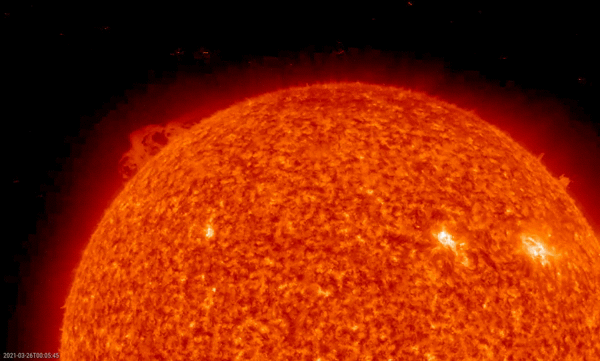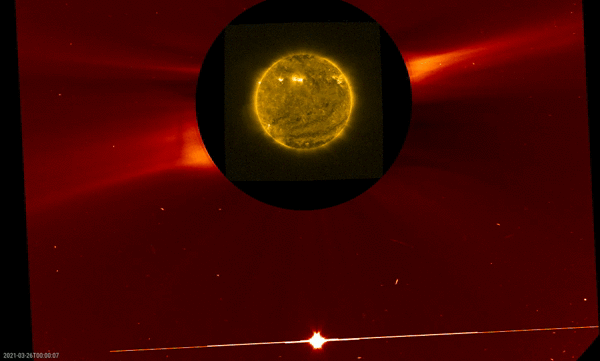On 26 and 27 March, extreme ultraviolet (EUV) imagery by the STEREO-A spacecraft showed a dynamic prominence near its northeast solar limb. Solar prominences are clouds of charged particles ("plasma") above the solar surface squeezed between regions of opposite magnetic polarity. Being cooler and denser than the plasma underneath and their surroundings, they appear as bright blobs when seen near the solar limb. STEREO-A is currently trailing the Earth by about 54 degrees, hence the prominence being at its east limb clearly shows this was a farside event as seen from Earth. At its maximum extent, the projected length of the prominence reached at least 360.000 km, that is basically the Earth-Moon distance. Also, it towered high enough above the solar surface to be even visible from the Earth, in part due to its relatively high latitude (between approximately 35 and 65 degrees). The clips underneath show the prominence activity on 26-27 March, one as seen by STEREO-A (EUVI 304, i.e. at temperatures near 80.000 degrees), the other as seen by PROBA2 (SWAP 174, i.e. at temperatures near 1 million degrees).


Contrary to the impressive prominence activity, the associated coronal mass ejection (CME) was a lot less spectacular. Coronagraphs from both STEREO-A and SOHO show only a very faint and ragged structure leaving the Sun. Seen from Earth, the CME was directed mostly towards the east and northeast, obviously without any earth-directed component. The bright dot in the coronagraphic images by SOHO to the south of the Sun, is the planet Venus, which had its superior conjunction with the Sun on 26 March (meaning it was located directly at the other side of the Sun as seen from Earth).






